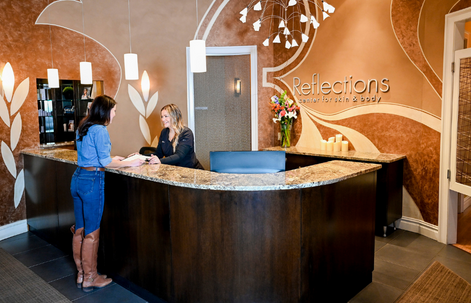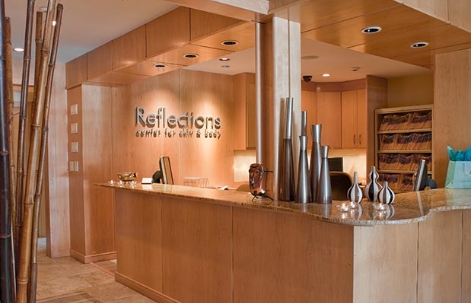Fat transfer removes excess fat from unwanted areas and transfers it to a new, more desirable location. Fat grafting is widely used in Brazilian Butt Lift surgery (BBL) for buttock augmentation, facial fat grafting for volume loss, and scar treatment for depressed or sunken-in scars from traumatic injury. With autologous fat transfer, only a portion of the transferred fat survives in its new location, and the percentage that survives can vary widely based on a host of factors, including how much harvested fat was transferred, the skin’s tightness and elasticity (or good skin tone), and how well you care for the transferred fat during the recovery process. What every cosmetic surgeon agrees on with fat transfer is that the patient’s actions during recovery directly and significantly impact how much fat survives.
So here are 10 things you can do after your fat transfer surgery to help ensure you get the best final results out of your cosmetic procedure and boost your self esteem.
1. Wear Your Compression Garment
Compression garments work by putting consistent pressure on the area. This has a few benefits, including reducing swelling, preventing fluid buildup, and supporting the injected fat. It’s important to wear your compression garment as much as possible during your recovery time since it will play a direct role in shaping your final results.
Beyond wearing the compression garment recommended by your plastic surgeon, you’ll need to plan to wear clothing that supports your healing process. Squeezing newly transferred fat into tight clothing is the fastest way to kill the extracted fat cells, so you want to make sure you’re not wearing tight or restrictive clothing during your healing process.
2. Feed The Fat
Your body will need extra calories to sustain the effort of providing the injected fat cells with blood supply and recovering from cosmetic surgery. Eating nutrient-dense foods will provide your body with all the vitamins and minerals it needs to support its recovery. Adding in more healthy fats to your diet will be helpful during your cosmetic procedure recovery. Try adding avocados, salmon, grass-fed butter, almonds, walnuts, extra virgin olive oil, and coconut oil.
3. Change Your Sleeping Position
Squishing your newly grafted fat is a big no-no for several weeks after your procedure. You’ll need to get creative about ensuring you’re not laying on your grafted fat, especially while sleeping.
For facial fat grafting, you’ll want to sleep in a modified position on your back, keeping your face from pushing against your pillow. This is actually a practice touted by a lot of plastic surgeons as beneficial for preventing wrinkles and thus there are a few benefits to adopting this long-term. That’s because squishing your face into your pillow for hours each night causes these wrinkles to eventually become permanent.
For a Brazilian butt lift, stomach sleeping is a good idea. It’s a little harder for you to roll over from your stomach during the night, so it can be a good way to keep you from rolling onto your backside out of habit. Side sleeping can be an option after Brazilian butt lift surgery, but only if you feel certain you won’t end up on your back. Consider using some pillows to create a barrier and prevent yourself from moving around.
4. No Driving
Facial fat grafting patients will typically take a day or two off driving while recovering at home. Brazilian Butt Lift patients will need to take at least two weeks off from driving.
Putting pressure directly on your newly transferred fat will squish and suffocate the fat cells; but if sitting is bad, driving is much worse. During driving, you push down on the pedals and thus push back against your entire lower body. Brazilian butt lift patients need to avoid driving for several weeks after their procedure – the closer you can get to 6-8 weeks (or completely healed) without driving, the higher your chances of keeping a larger percentage of the transferred fat intact.
5. Sit On Your Thighs
This one applies to Brazilian butt lift patients. One trick that helps keep you off your butt during the healing process is to sit on a towel. Sounds crazy, right? Here’s the trick: roll up the towel to make a cylinder and then place it underneath your thighs, keeping your weight off your butt. Just be careful not to cut off the blood supply. If your thighs begin to feel numb, stand for a few minutes to ensure blood circulation and then re-position.
6. No Smoking
Smoking should be avoided after any surgery. That’s because smoking affects the flow of oxygen and nutrients through the bloodstream, crippling your body’s ability to heal itself after your procedure. With fat grafting, your newly transferred fat cells need to re-establish a blood supply in order to survive and thrive in their new home. Smoking makes it harder for your body to build new blood vessels and affects the quality of blood those fat cells receive during their recovery. Secondhand smoke is just as bad for you, so be sure to avoid smoking areas during your surgery recovery as well.
7. No Exercising
Exercise helps blood and fluids circulate throughout the body, and a healthy lifestyle is a good goal for anybody. However, it’s important to avoid strenuous activity during the first two months of recovery to ensure you aren’t burning off any of the transferred fat to fuel workouts. During this time, light walking is a better way to stay active – be careful not to burn too many calories or do any movements that put pressure on your transferred fat.
After eight weeks, your fat grafting should have established a proper blood supply. At this point, getting a good sweat session in can help pump fresh, nutrient-rich blood into the area. One tip to remember as you start exercising is that you should avoid activities that put pressure, compression, or trauma on your fat grafting. For example, Brazilian butt lift patients should avoid stationary bikes and leg sleds, both of which put pressure on the buttocks. Instead, try the elliptical or hack squat machines.
For facial fat transfer, any up and down movement can be traumatic to the face’s fat pads. We know from several studies that running in particular can cause facial fat wasting, so avoid running or bouncing activities – even an elliptical set to a high stride height can cause bouncing, so try the stationary bike or rowing machine instead. Weightlifting and other low-impact sports have not been shown to affect facial volume, so those are fine to start back up at eight weeks.
8. Stay Hydrated
We all know hydration is key to health, but when your body is working hard to repair itself, it relies heavily on water to help clear away waste and move nutrients throughout the body. However, drinking water alone is not enough. You’ll also need to provide your body with electrolytes, the salts and minerals that help your body hold on to water. Try incorporating a few pinches of pink Himalayan salt or a small sports drink (like Gatorade, Powerade, or Smart Water) into your diet each day during the first eight weeks of your recovery.
9. Keep A Stable Weight
Weight fluctuations after fat transfer can negatively affect your procedure results. For facial fat transfer patients, weight loss can reduce the amount of fat in your face, especially if that weight loss is achieved through high-impact sports such as running. Weight gain tends to have less of an impact on fat grafting to the face.
For Brazilian butt lift surgery patients, weight gain can cause undesirable effects. “Weight gain” means significant weight, not just five pounds. Gaining significant weight after liposuction can cause that fat to accumulate in new areas – for example, a pear-shaped woman who’s never concerned herself with underarm flab may suddenly find her upper back and arms tend to gain weight first rather than her tummy (where excess fat was removed during a Brazilian butt lift procedure). Weight loss after a Brazilian butt lift may cause your buttocks to lose weight, though it would be proportionate to weight loss throughout the body.
Maximizing Your Fat Grafting Results
A procedure like Brazilian butt lift surgery can be a powerful way to get rid of excess fat with liposuction and put it where you want it – for the most natural looking results possible. As with any cosmetic surgery, recovery is the most important part, along with selecting a board-certified plastic surgeon who can help you make the most of your procedure. To meet with our award-winning team of cosmetic physicians and plastic surgeons, contact our offices in Livingston and Bridgewater by calling or filling out our online contact form.
Call 732-356-1666 to schedule your complimentary Fat Transfer consultation with us today!







